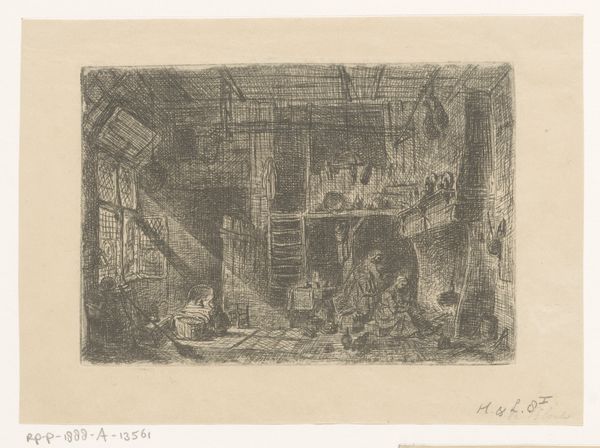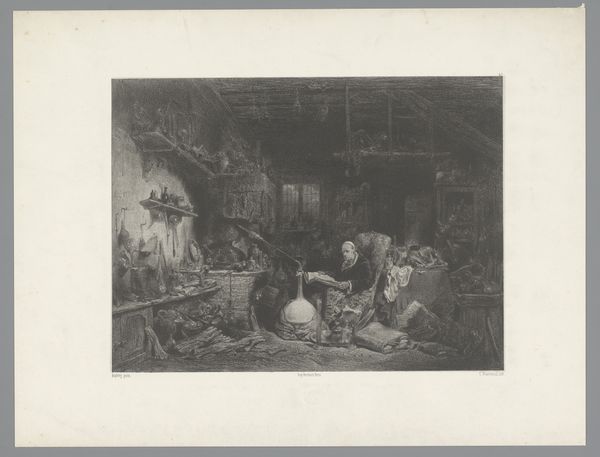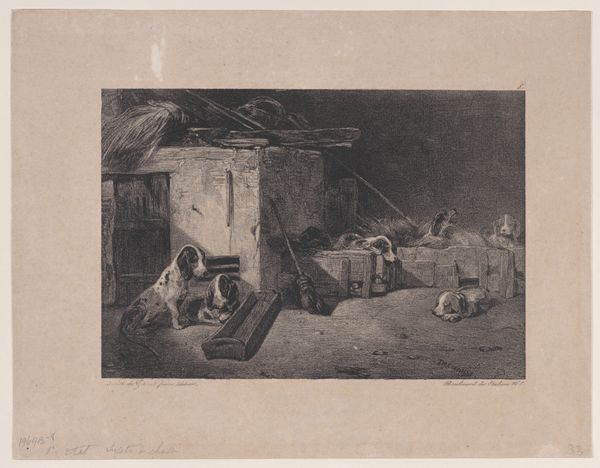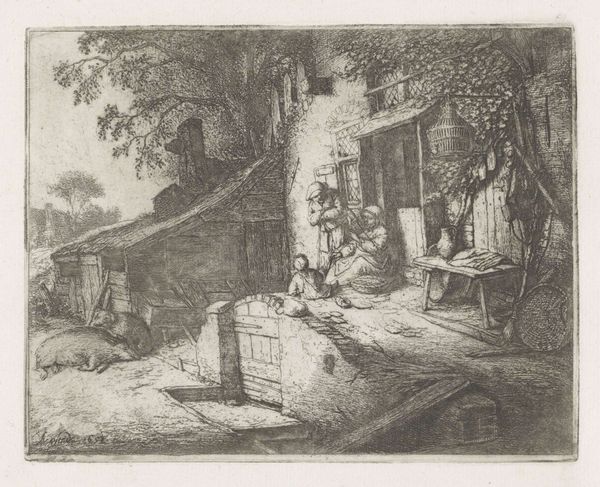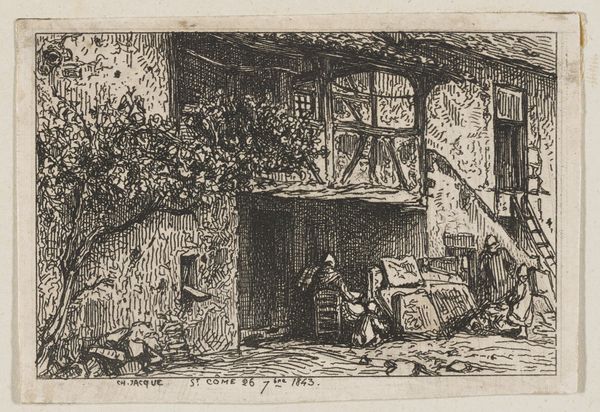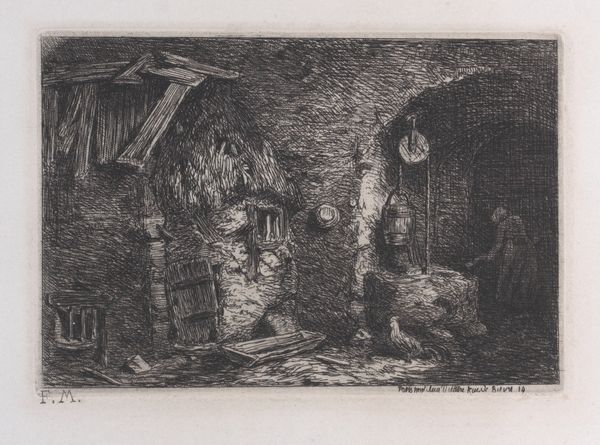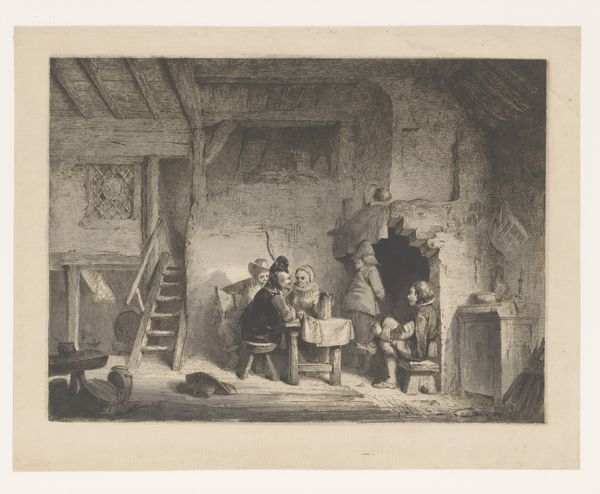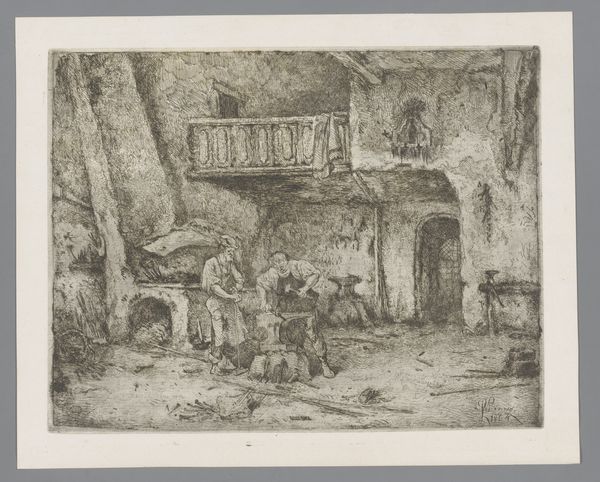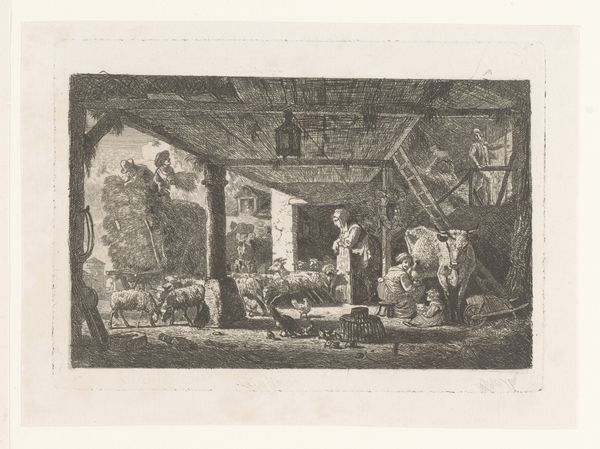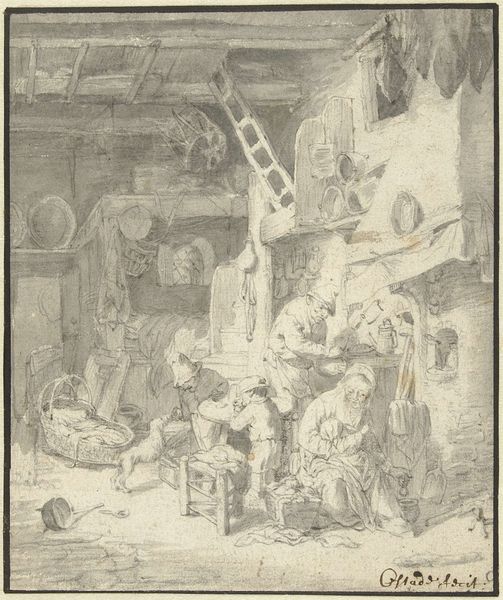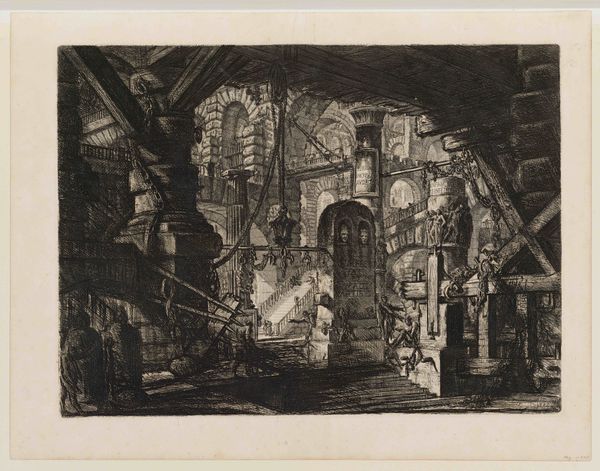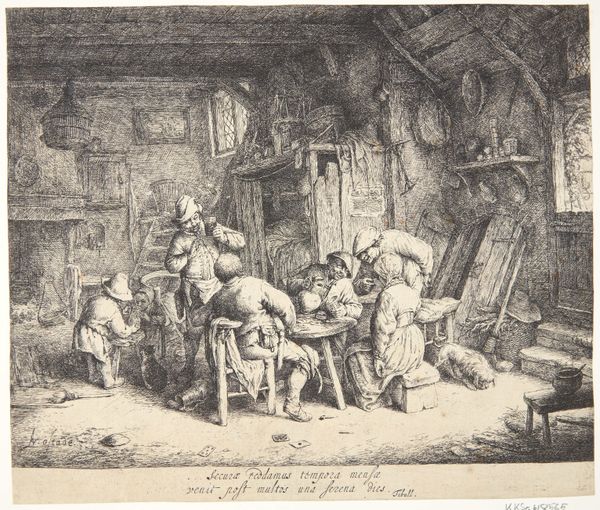
print, etching, engraving
#
portrait
# print
#
etching
#
figuration
#
line
#
genre-painting
#
engraving
#
realism
Dimensions: height 102 mm, width 148 mm
Copyright: Rijks Museum: Open Domain
Curator: Before us is Eugène François de Block’s “Interieur met kinderen en vrouwen voor de haard,” created between 1840 and 1842. The work is an etching and engraving, currently held at the Rijksmuseum. Editor: The tonal range achieved through line work here is so beautiful! There is a captivating interplay of light and shadow depicting the cozy warmth and quiet, yet busy atmosphere. Curator: Indeed. De Block captured the quotidian interior scene so realistically. I’m especially drawn to how he frames the family within this domestic sphere. It’s important to recognize how the artist's approach was connected to the increasing interest in genre paintings during this period, focusing on the everyday lives of ordinary people. Editor: Right. You can see the social structure clearly; observing where each member works is fascinating. And notice the physical making of the space, that incredible hearth and those beautiful aged floorboards under their feet—it really illustrates lives materially lived! I’d like to know how much labour went into constructing this. Curator: Absolutely. This etching, using both line and tone, presents a scene that feels staged, reflecting the idealized portrayal of family life promoted during that period. Editor: But doesn’t it also ground it in tangible, real experience? You see this in the children in their place as the next generation that must come of age into the laborious realities and comforts. Curator: I concur, and it serves as an evocative snapshot into 19th-century Dutch life, inviting us to contemplate societal and gendered roles within this setting. The engraving makes it a relatable image in a way that transcends class and location. Editor: Agreed. And observing these figures alongside the material landscape—considering the labor, creation, and impact of use, both social and physical—presents a poignant intersection. Curator: Examining “Interieur met kinderen en vrouwen voor de haard” helps to gain insights into social, cultural, and historical values of the 19th century, highlighting how art contributes to shape perceptions of daily life. Editor: Ultimately, what resonates here is a tangible vision—the labor, the resources, the very hands that made a life within these walls.
Comments
No comments
Be the first to comment and join the conversation on the ultimate creative platform.

